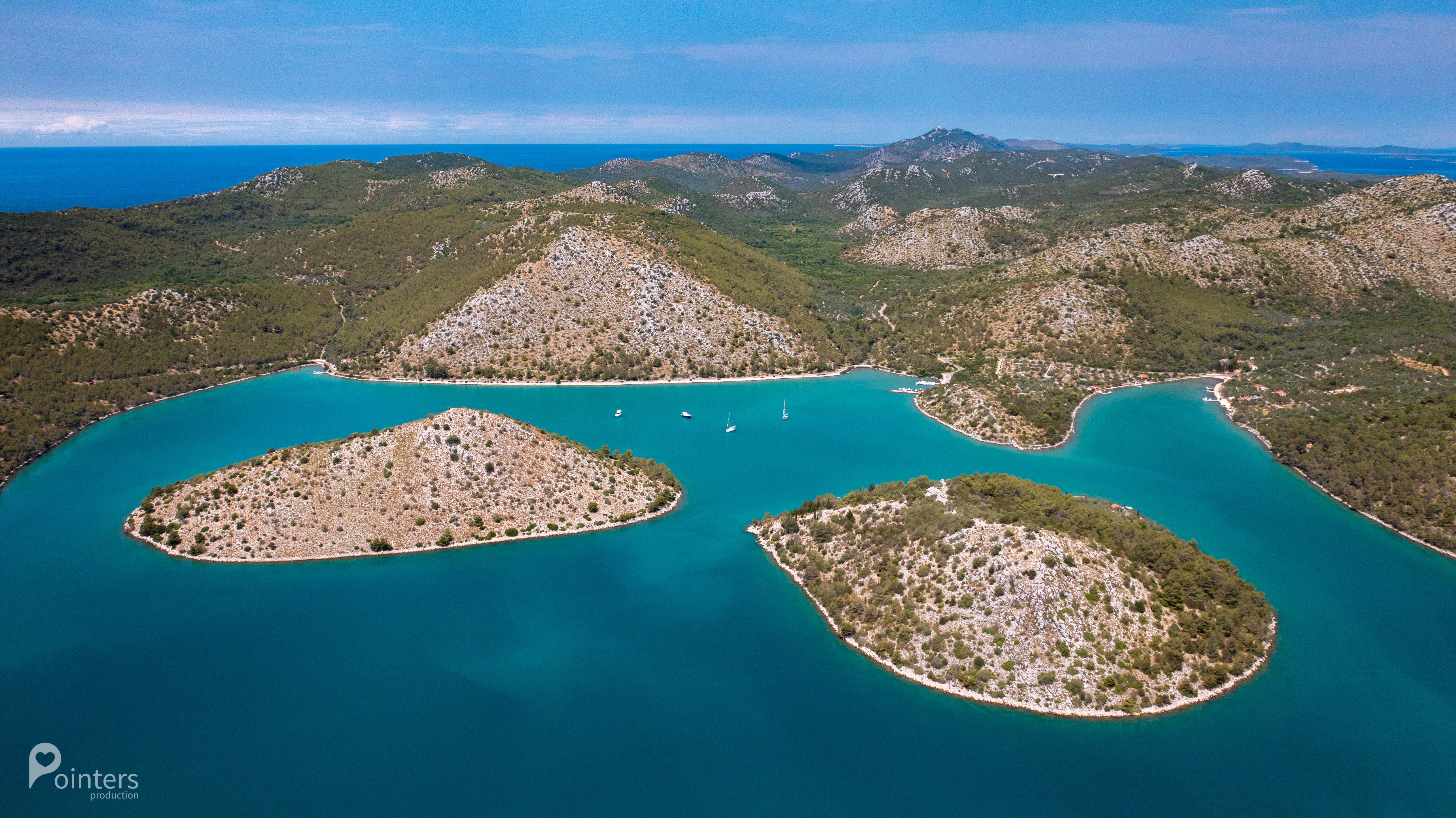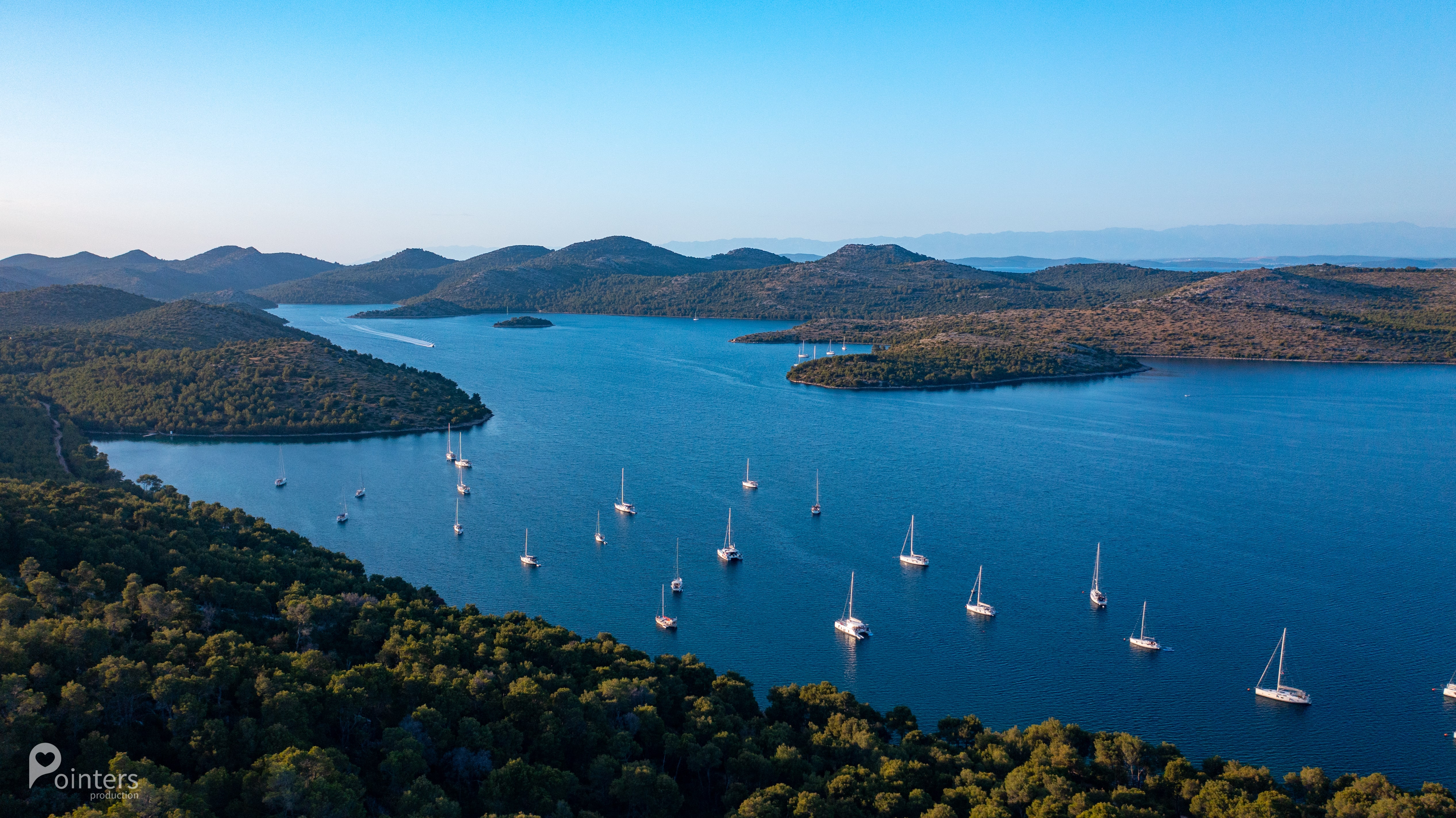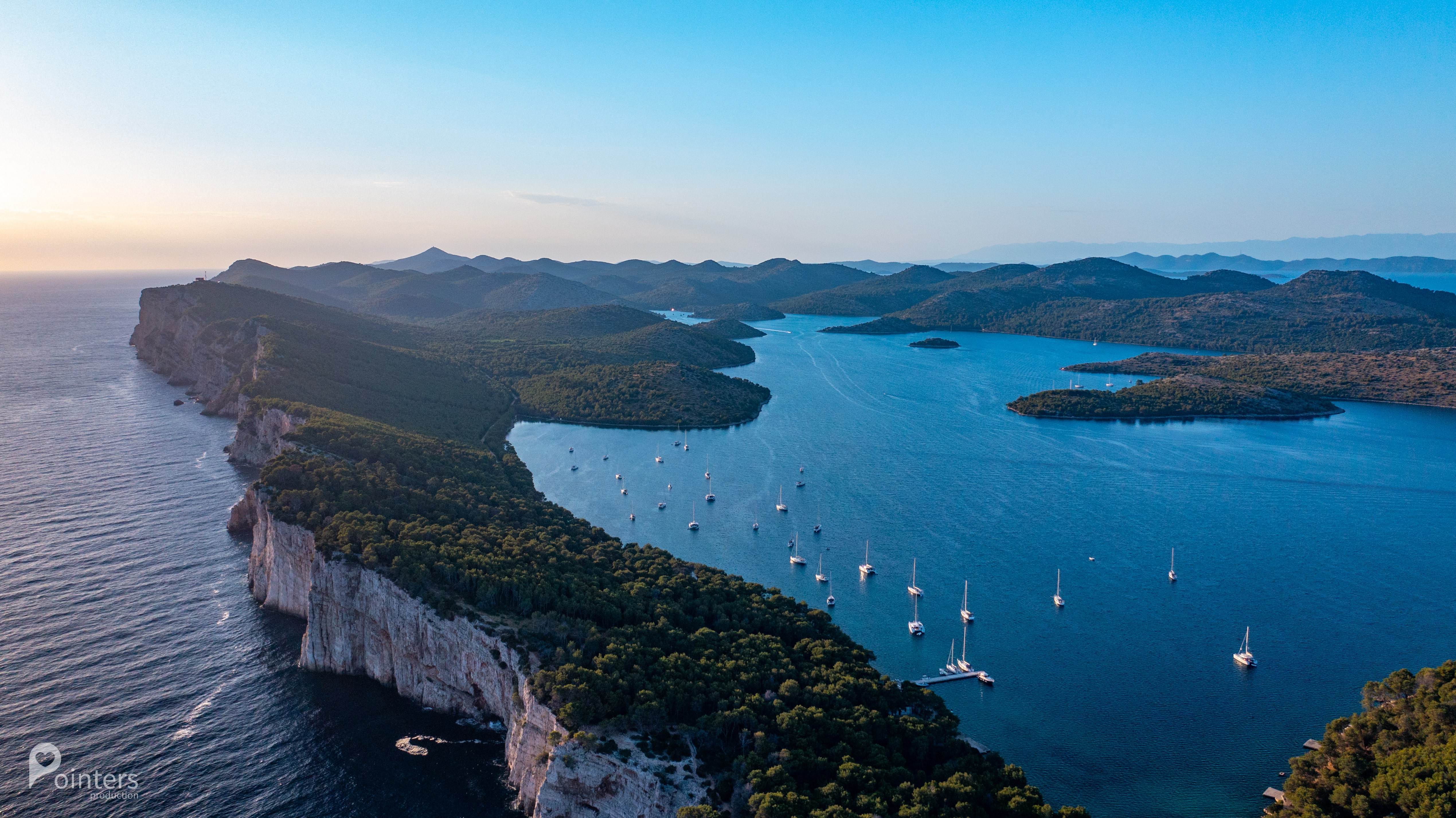A bay in the central part of the eastern coast of the Adriatic Sea, in the southeastern part of the island of Dugi otok.
Thanks to its exceptional beauty, wealth and significance, this cove, surrounded by 13 islands and islets, and containing six islets within the cove, was declared a Nature Park in 1988. It received the status of a protected area in 1980 thanks to its extremely valuable flora and fauna, geological and geomorphological phenomena, valuable seabed communities and interesting archaeological heritage.
The area of the Telašćica Nature Park is an area rich in contrasts, with quiet and peaceful beaches and a laid-back coast on one side and wild steep cliffs on the other, an area of Aleppo pine and holm oak forests on the one side, and a bare rockery on the other, an area of cultivated fields covered with vineyards and olive groves, but also an area of degraded forms of vegetation covering dry habitats.

Three fundamental phenomena represent the basic characteristics of this area: the unique bay of Telašćica as the safest, most beautiful and largest natural harbor in the Adriatic Sea, where there are 25 small beaches, the cliffs of the island of Dugi Otok or the so-called "rocks", which rise up to 161 meters above the sea and descend to a depth of up to 90 m, and finally the salt lake "Mir" with healing properties. The most picturesque among the islands is the island of Katina, and the most unusual is certainly Taljurić.
The total area of the Nature Park is 70.50 km2, 25.95 km2 on Dugi otok and neighboring islets, and 44.55 km2 on the sea. In the surroundings there are beautiful cultivated meadows, and on the hills rich Mediterranean vegetation with about 500 plant species and an equally rich fauna. The underwater world has over 300 plant and 300 animal species.

More than 2,500 sunny hours per year, average January temperature higher than 7°C and annual average higher than 16°C are the characteristics of the climate of that area. In winter, the sea is approximately 13°C, and in summer approximately 23°C.
The fact that Telašćica has been a crowded place since ancient times is evidenced by the remains of Roman buildings in Mala Proversa, as well as numerous pre-Romanesque churches, among which the church of St. John in Stivanja polje, and the first record of fishing from the end of the 10th century testifies to the fact that the beginnings of fishing among Croats began precisely on these shores. In the Nature Park, it is possible to dive in several attractive places near the cliffs, and to walk around interesting places, and the beautiful view from the viewpoint Grpašćak is not to be missed.

This, and much more, attracted and attracts visitors to Telašćica Bay, which as a Nature Park of the Republic of Croatia belongs to the high category of protected parts of nature, which it deserves. In the vicinity of Telašćica Nature Park there are also three Croatian national parks: National Park Kornati, National Park Paklenica and National Park Krka, and two nature parks PP Vransko jezero and PP Velebit.